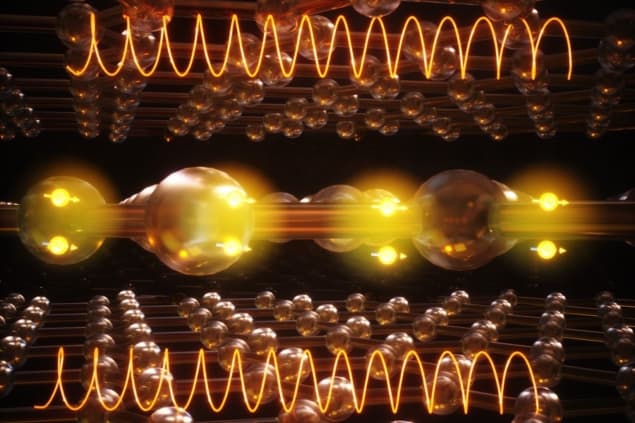
Physicists in the US and Japan have observed superconductivity in a graphene-based material during the application of very high magnetic fields. What is more, the superconductivity re-emerges after dropping to zero as the field strength is increased.
The team, led by Pablo Jarillo-Herrero at the Massachusetts Institute of Technology, spotted the curious behaviour in magic-angle twisted trilayer graphene (MATTG), which is a member of a family of 2D materials that have extraordinary properties. The team’s observations suggest that MATTG displays the extremely rare property of 2D spin-triplet superconductivity – which could be used to create more resilient quantum computers.
When an electrical current is applied to a conventional superconductor, Cooper pairs of bound electrons can move through the material without any electrical resistance. Normally, these electrons exist in spin-singlet Cooper pairs, in which the electrons’ spins point in opposite directions.
Pauli limit
When a strong magnet field is applied to a superconductor, these spins are forced to both point in the same direction, thus destroying the Cooper pairs and the superconductivity. This occurs at a field strength called the Pauli limit, which in conventional superconductors is about 3 T.
In some exotic superconductors, Cooper pairs can be formed by electrons in a spin-triplet state in which both spins point in the same direction. In this case, pairs can stay bound together in magnetic fields above the Pauli limit.
Graphene is a sheet of carbon just one atom thick and Jarillo-Herrero’s team made their discovery as part of their exploration of the exotic electrical properties of stacked sheets of graphene. In 2018, the team found that if the atomic lattices of bilayer graphene are rotated slightly by a magic angle, the material becomes a superconductor. In 2021, the team found that magic angle twisted trilayer graphene (MATTG), where the atomic lattice of the middle layer is rotated slightly relative to the top and bottom layers is also a superconductor, but also appeared to be unusually resistant to high magnetic fields.
High fields
Now, the team has investigated this property of MATTG further. When applying a current to the material and measuring its resistance, they found that superconductivity only disappeared entirely at applied magnetic field strengths of around 8 T.
But that is not all. When the team further increased the strength of the magnetic field, the material became a superconductor again. Indeed, the superconductivity endured to fields as high as 10 T, which was the maximum strength of their magnet. This is 2–3 times the expected Pauli limit for MATTG.
Called re-entrant superconductivity, this effect has been seen in other spin-triplet superconductors, leading the team to suggest that MATTG is such a material – something that they hope to confirm in future studies.
Even if MATTG is not a spin-triplet superconductor, its resilience in high magnetic fields could lead to significant improvements in technologies such as magnetic resonance imaging (MRI) – which relies on superconducting magnets to create high magnetic fields. Superconductors are also used as quantum bits (qubits) in some quantum computers, and MATTG-based devices could be more resilient to debilitating magnetic noise.
The research is described in Nature.
